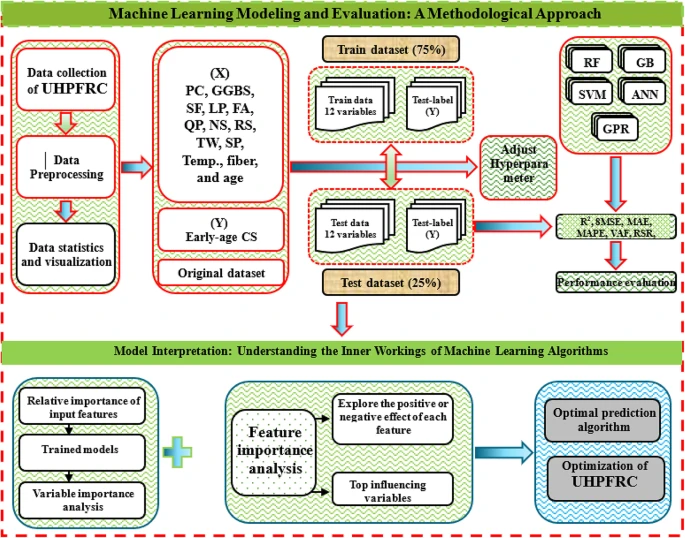AI Meets Concrete: Predicting Early-Age Strength of UHPFRC with Machine Learning
In a pioneering study published in Scientific Reports, a team of civil engineers led by Mohamed Abdellatief, Wafa Hamla, and Hassan Hamouda has leveraged artificial intelligence (AI) to accurately predict the early-age compressive strength (CS) of ultra-high-performance fiber-reinforced concrete (UHPFRC). The article offers a major advancement in materials science by combining machine learning (ML) models with experimental data to address longstanding limitations in the field of concrete strength estimation.

UHPFRC, a material renowned for its exceptional mechanical properties, durability, and sustainability, is increasingly utilized in critical infrastructure projects like bridge decks, thin walls, and prestressed girders. However, reliably predicting its early-age strength has remained a challenge—until now. Traditionally, destructive testing methods were the norm, leading to time delays and inconsistencies. In this groundbreaking study, five AI algorithms—Support Vector Regression (SVR), Random Forest (RF), Artificial Neural Network (ANN), Gradient Boosting (GB), and Gaussian Process Regression (GPR)—were trained on a robust dataset of 293 samples to generate accurate, non-destructive predictions.
Why Predicting Early-Age Strength Matters
Early-age CS is essential for construction timelines, determining when formwork can be removed and whether structural integrity is met. However, variations in curing temperature, water-to-cement ratio, and fiber content can dramatically alter outcomes. The team’s analysis confirmed that variables like curing age, curing temperature, superplasticizer content, and steel fiber volume were the most influential in determining early compressive strength. Using feature importance analysis, the study even recommends optimal ingredient ranges—for instance, a water content between 145–155 kg/m³ and superplasticizer between 30–40 kg/m³—to achieve peak early performance.
Gaussian Process Regression: The Star Performer
Among all tested models, GPR delivered the best results, boasting an R² score of 0.932 and the lowest mean absolute error (MAE) and root mean square error (RMSE). Unlike simpler empirical models like those from the American Concrete Institute or Abrams' Law, GPR captured complex nonlinear interactions among 13 variables. It also provided uncertainty estimates with every prediction, a significant advantage in real-world applications.
Industrial Implications and Future Potential
The implications are enormous. With AI-driven models, engineers can now design optimized UHPFRC mixes with confidence and efficiency. This contributes to reduced construction costs, faster timelines, and enhanced safety margins. Furthermore, the authors suggest incorporating explainable AI (XAI) methods like SHAP and LIME in future research for even deeper insights. There is also a need for more large-scale, real-world datasets to further validate these findings.
Conclusion
This study serves as a transformative step forward in the domain of construction materials science. By demonstrating how machine learning can unlock new performance insights from traditional materials, it charts a path toward intelligent infrastructure. The integration of GPR and SVR models into early-stage construction protocols could redefine how civil engineers approach quality control, sustainability, and safety.
To read the full open-access article, visit: https://www.nature.com/articles/s41598-025-06725-z
Sponsored by PWmat (Lonxun Quantum) – a leading developer of GPU-accelerated materials simulation software for cutting-edge quantum, energy, and semiconductor research. Learn more about our solutions at: https://www.pwmat.com/en
📘 Download our latest company brochure to explore our software features, capabilities, and success stories: PWmat PDF Brochure
📞 Phone: +86 400-618-6006
📧 Email: support@pwmat.com
#MaterialsScience #ConcreteTechnology #UHPFRC #MachineLearning #AIinConstruction #CivilEngineering #CompressiveStrength #SmartMaterials #QuantumServerNetworks #PWmat

Comments
Post a Comment